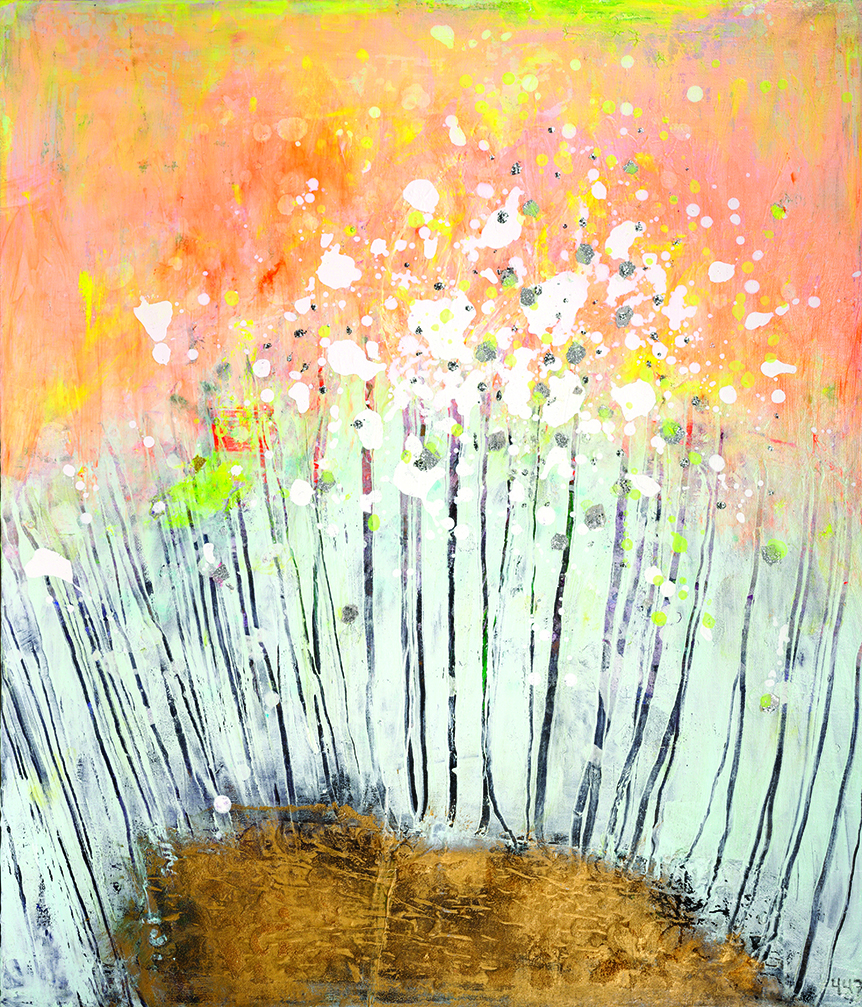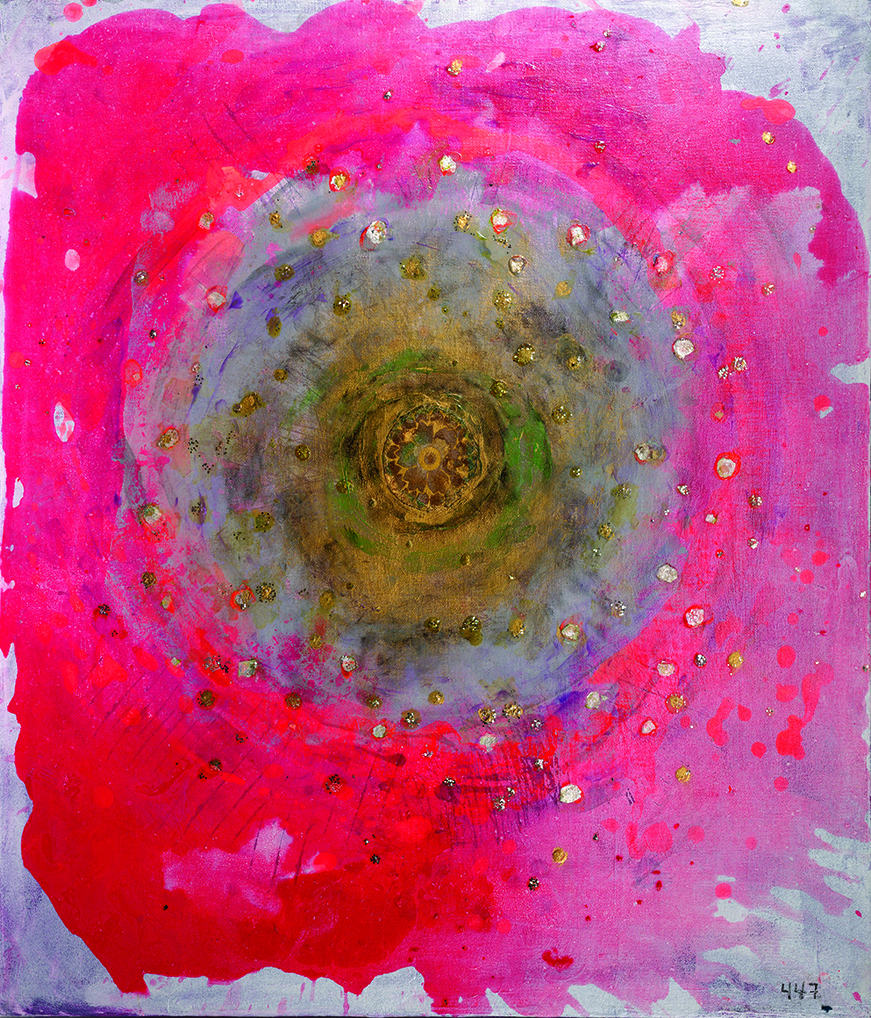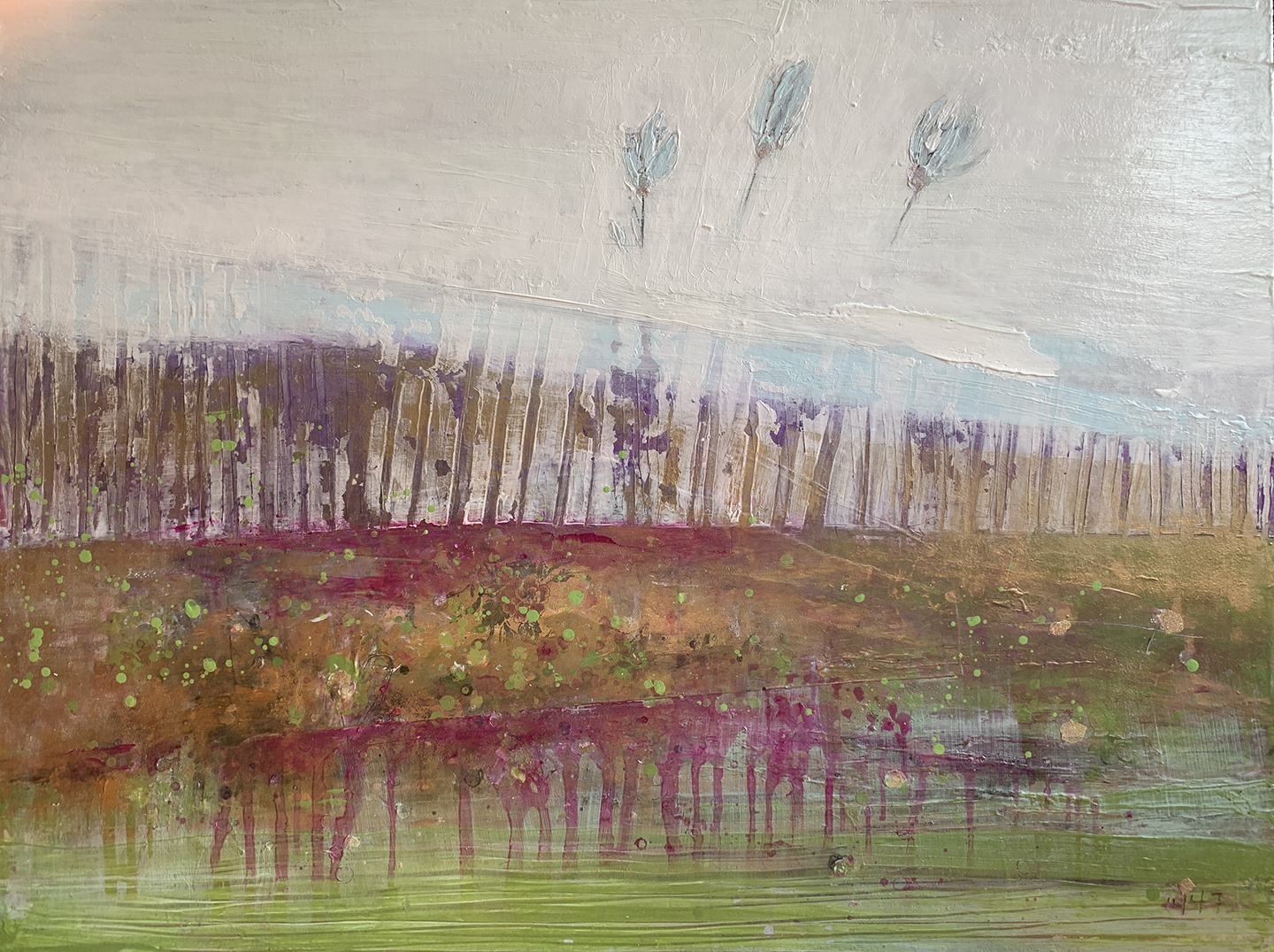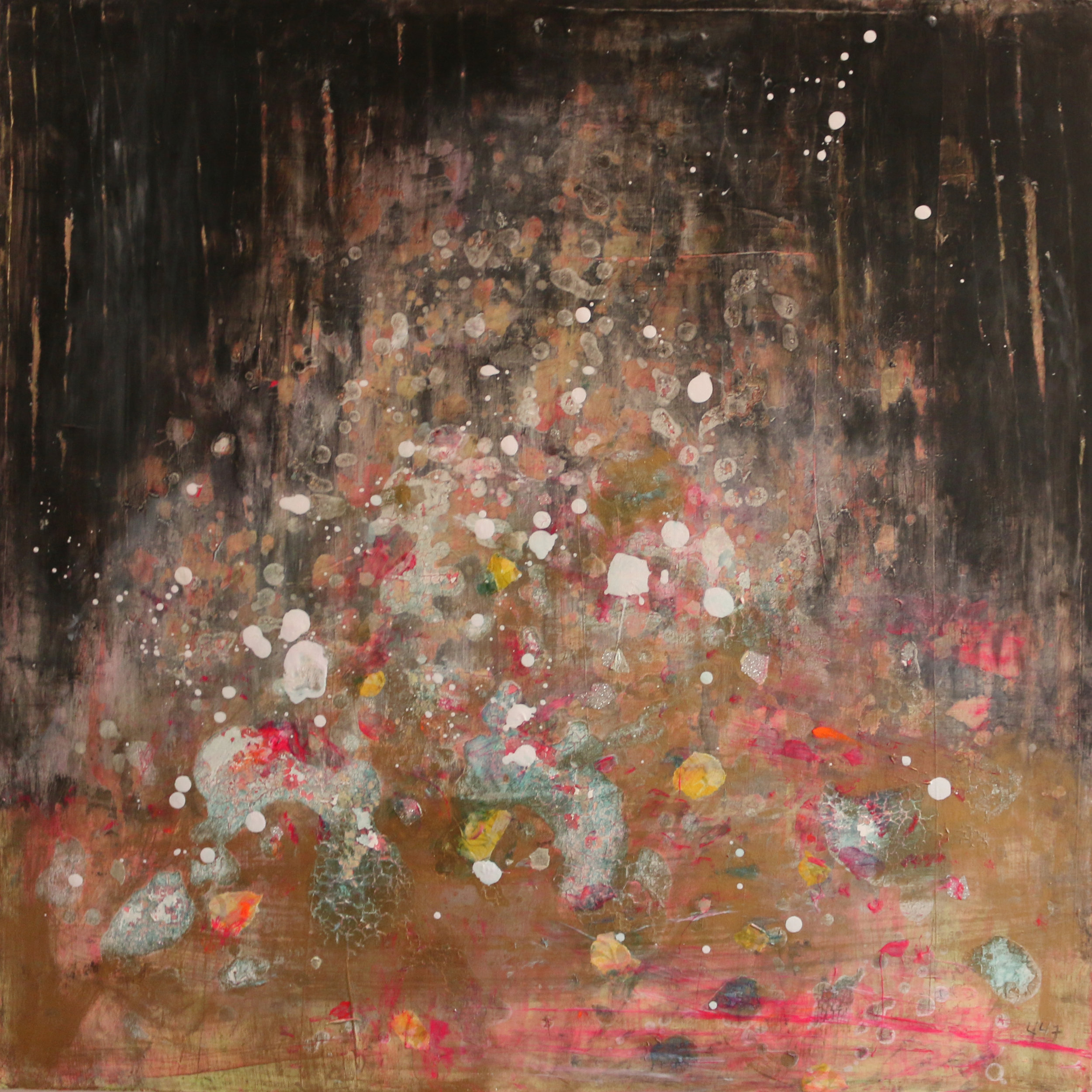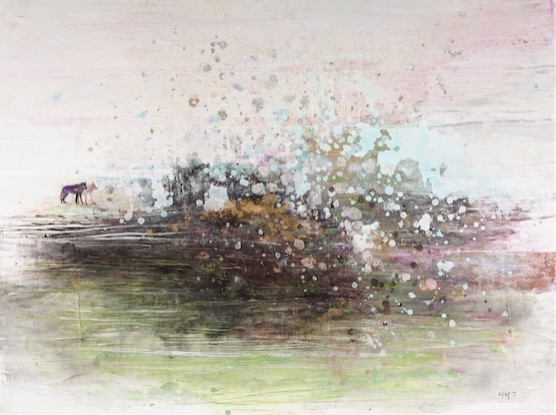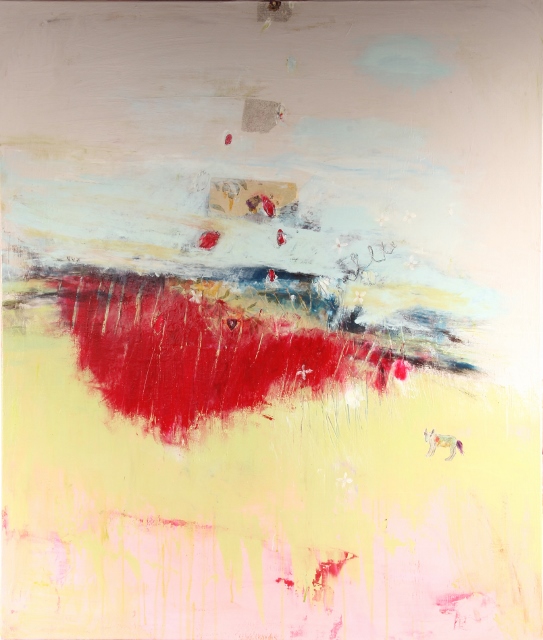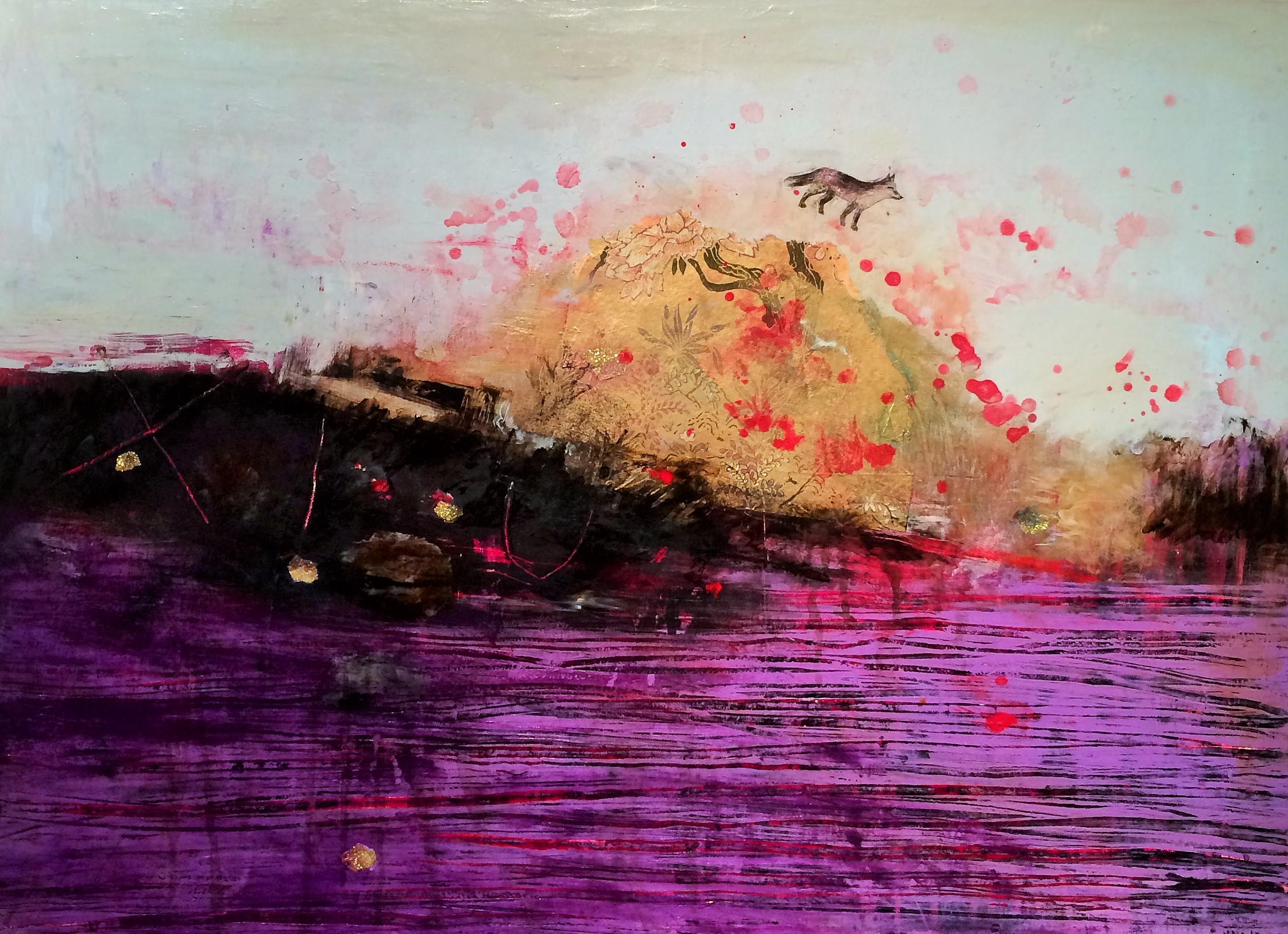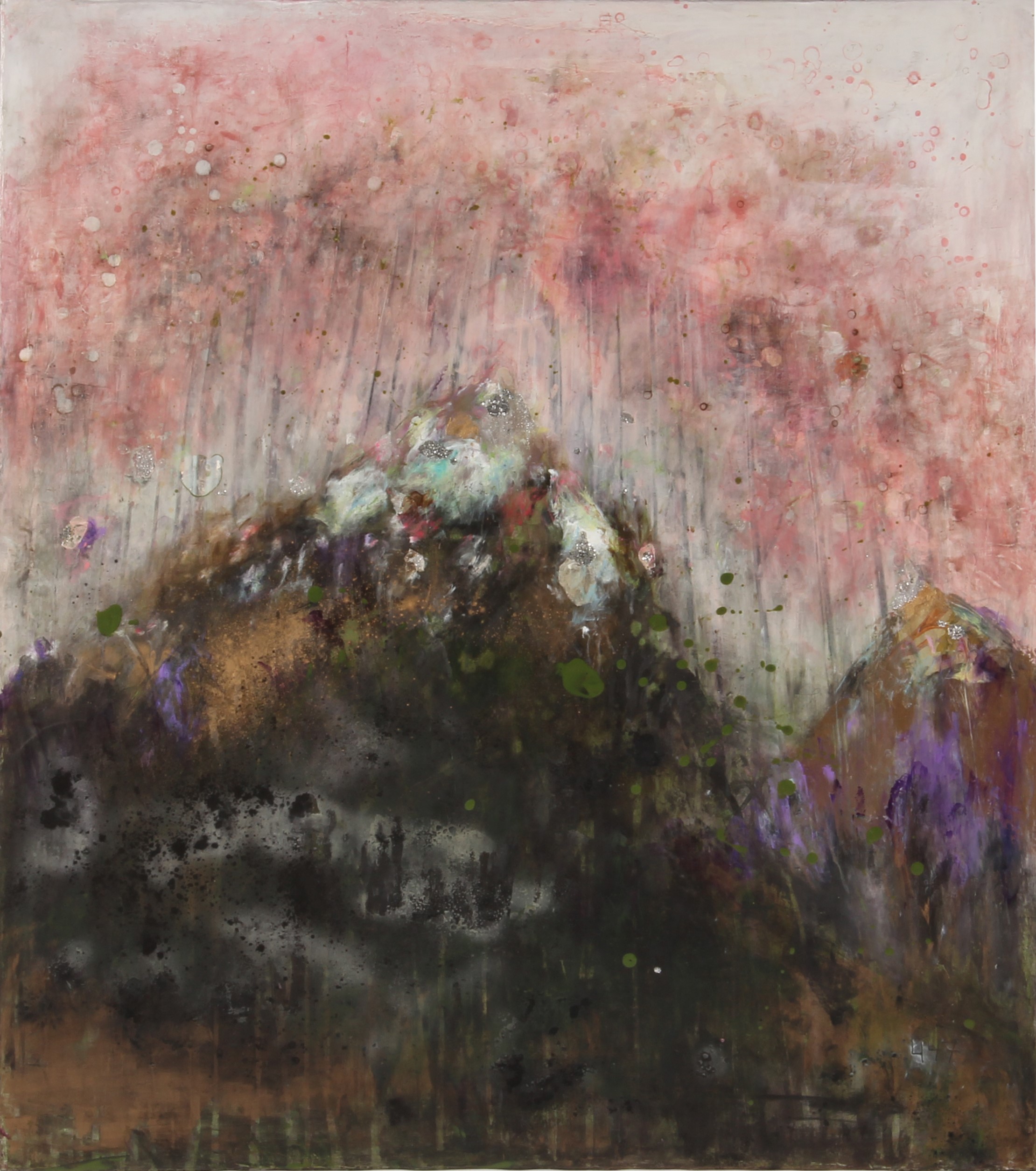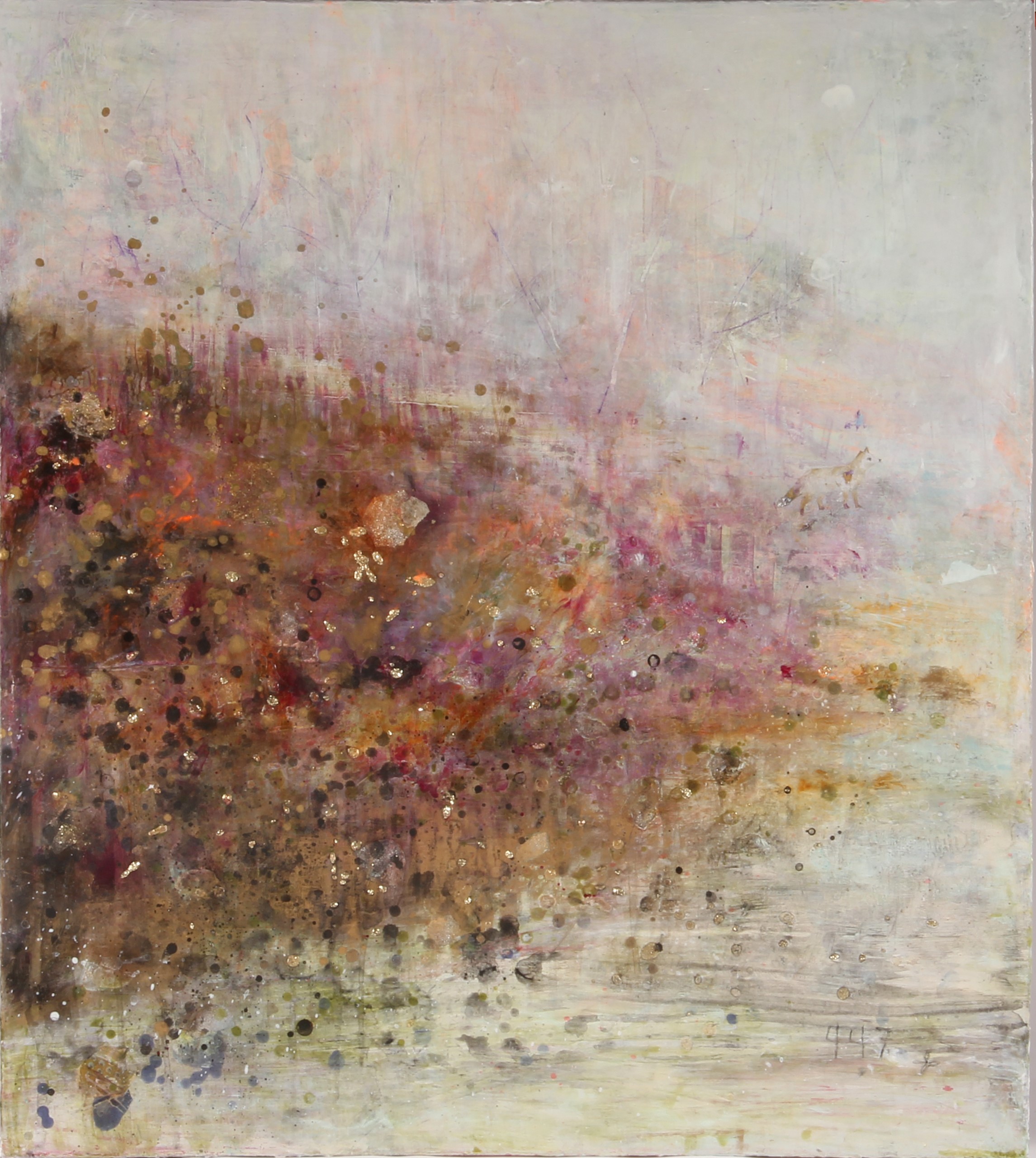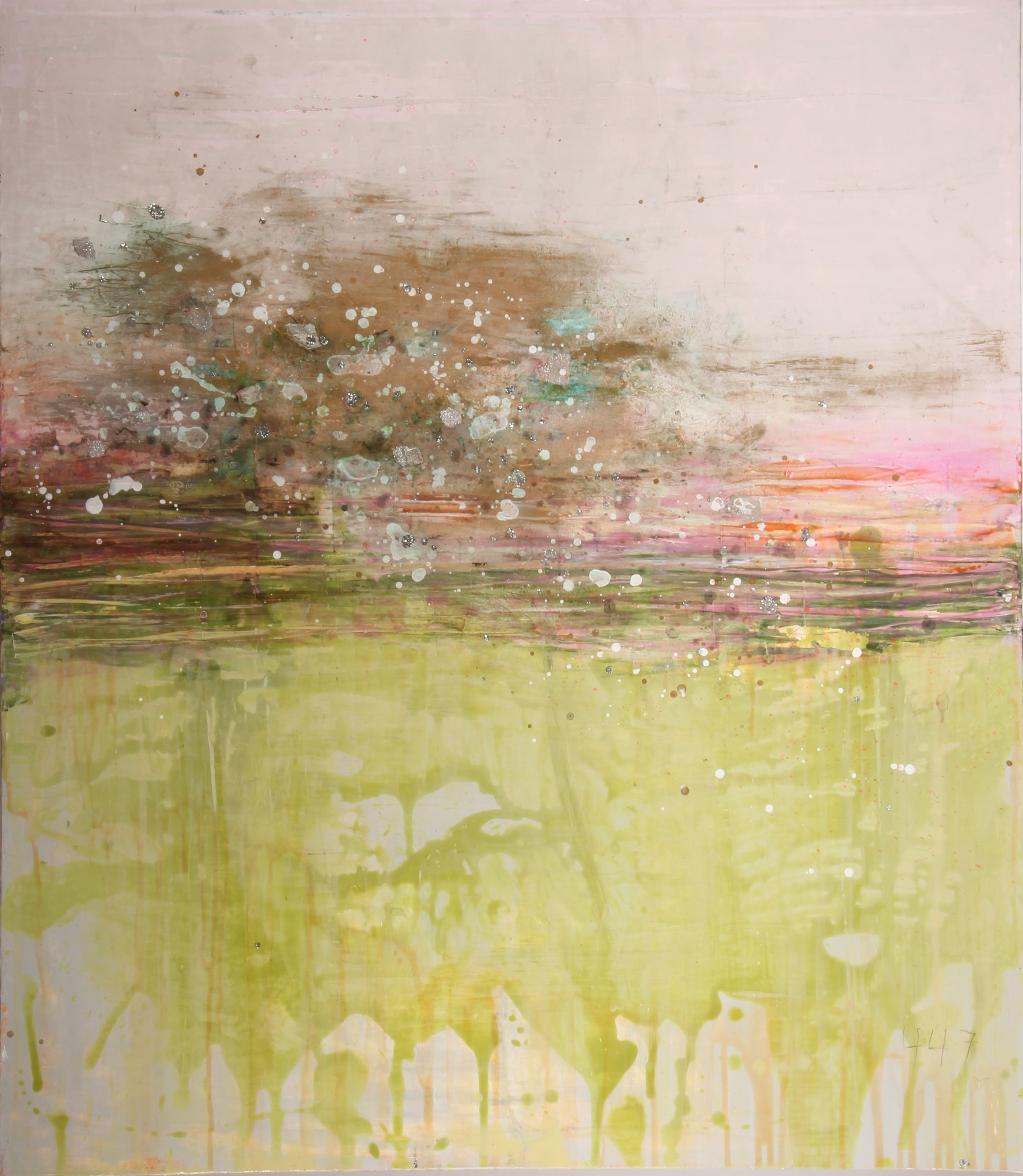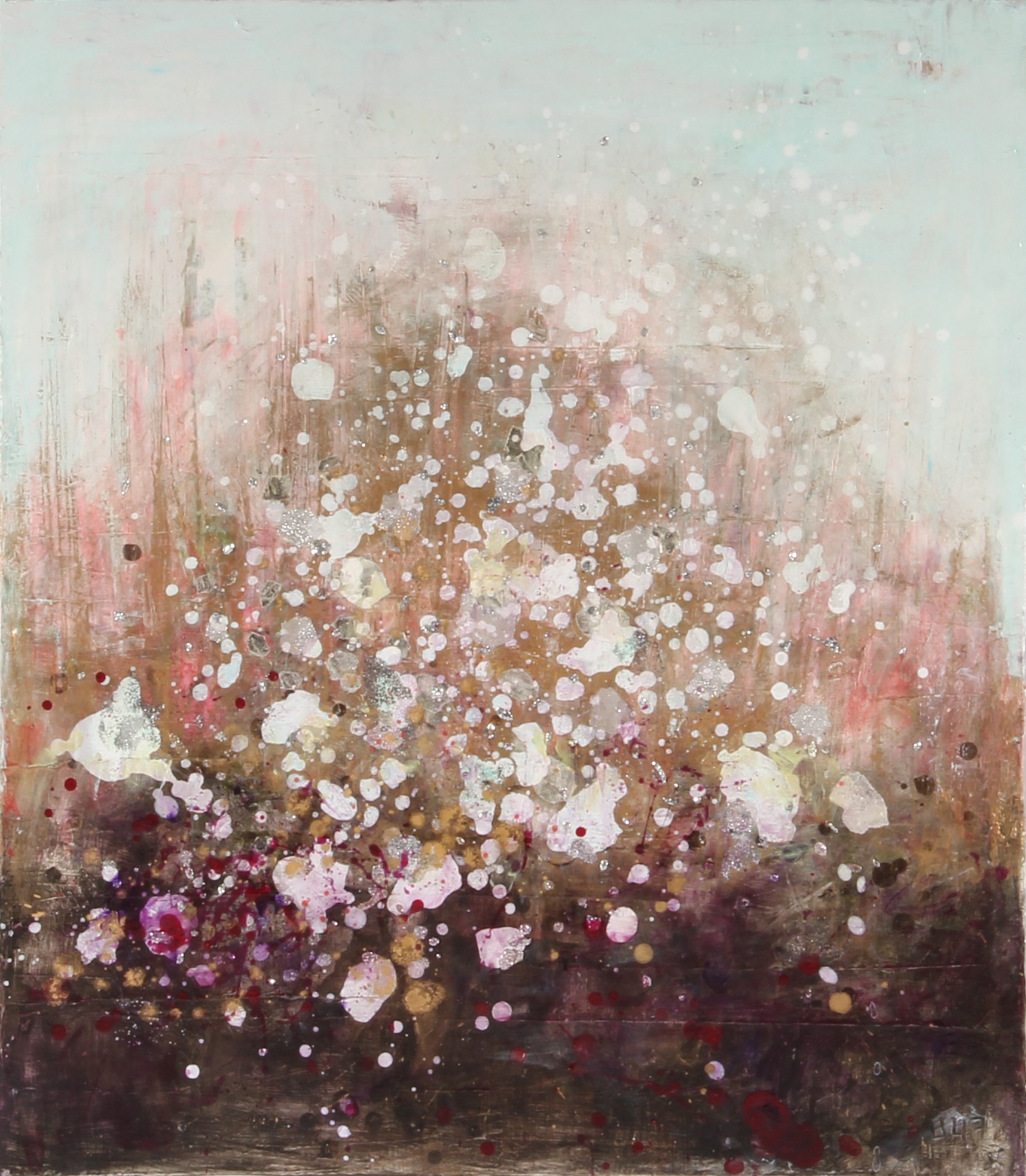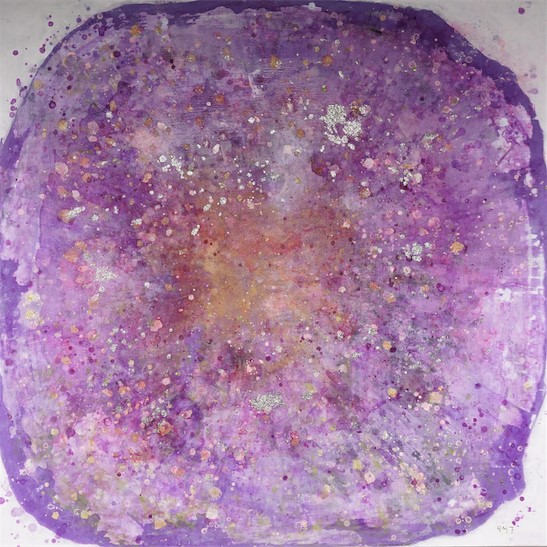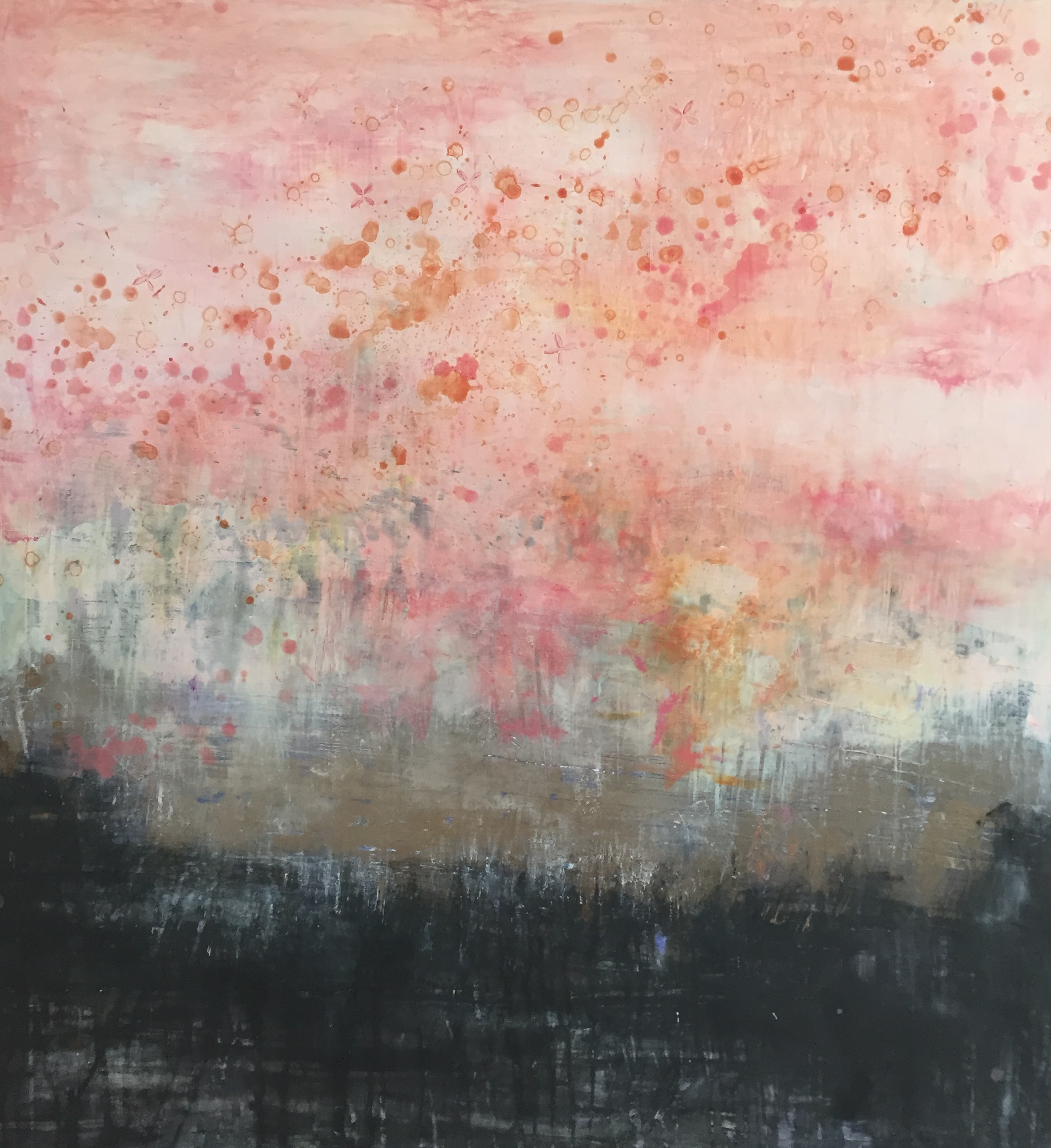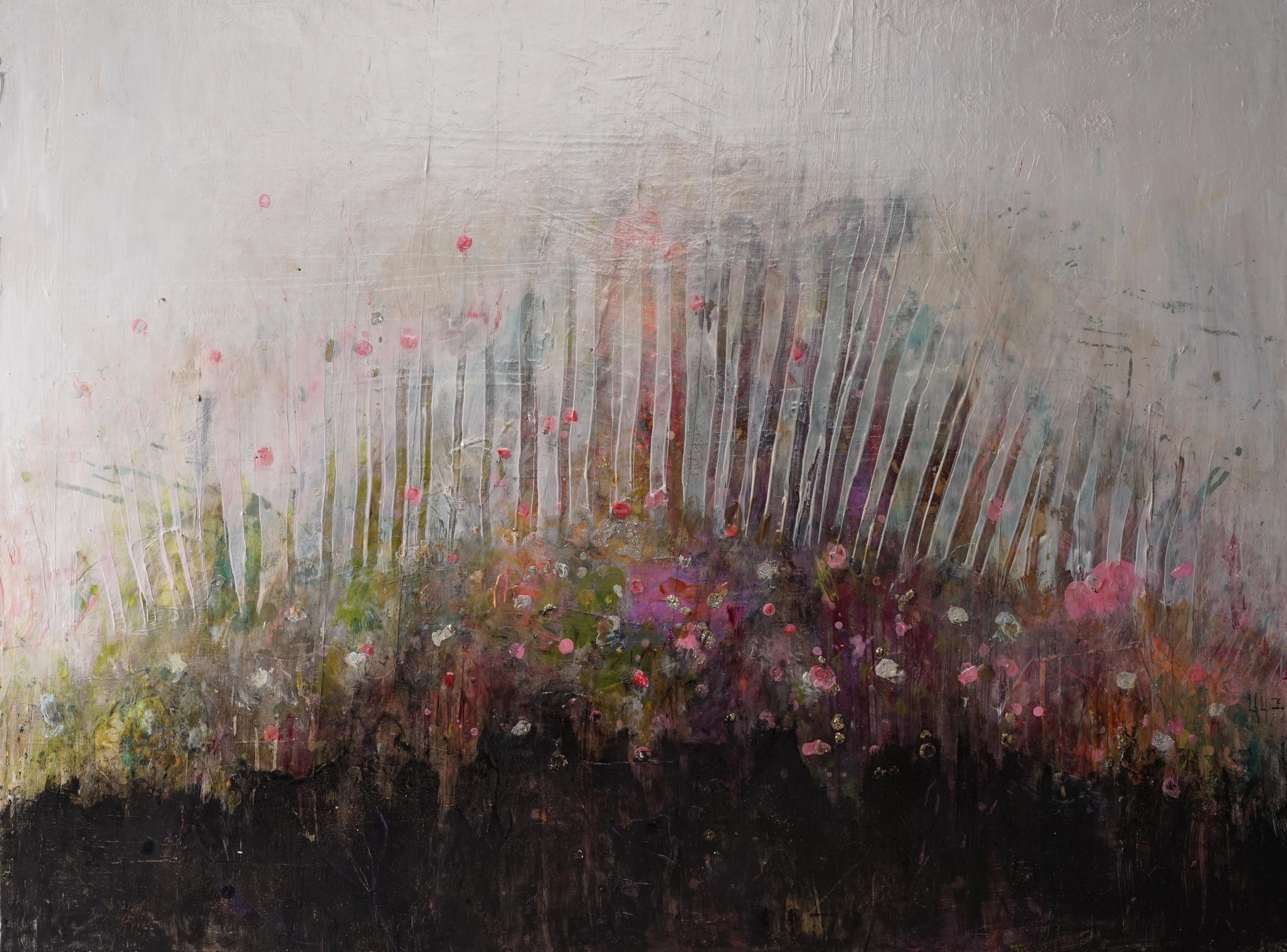Who is, or has been, the biggest influence on your art?
My father, a man of many talents, instilled in me an appreciation and curiosity for the subtle nuances in nature and seeing beyond the surface. Our family spent summers camping and later cabin life in the northern woods of Wisconsin. Paddling the canoe, hiking through swamp land, sitting by the campfire — these were perfect opportunities to direct my eye to the dragonfly sitting on the lily pad, the vibrancy of a simple stone under water and the vastness of a starry night. On our annual road trips though the US and Canada his Nikon was his constant companion, capturing minute detail in the tiniest flower inviting me to do the same. At home he spent long hours in his workshop refinishing furniture “finds” — it was my job to feel the silky surface and nod my head in disbelief that a knot in a piece of mahogany could be so lovely. He’s a funny man shaking his head in bewilderment that his now adult kids are so artistic, “Where did it come from?“
Which of your works is your personal favorite and why?
There’s an untitled self-portrait hanging above my fire mantel — my version of "Olympia” by Manet. At one point it hung in the front entrance of our home and friends of my then young daughters would giggle at the embellished nipples while some parents actually ducked their heads in disbelief. I saw it as a celebration of my divine femininity created shortly after I was diagnosed with cervical cancer and subsequent hysterectomy. I love that art can trigger buttons and break the boundaries of what some may or may not consider taboo.
Of all your travels, which city or place inspires you the most? Why?
In 2006 I travelled with my young girls and husband to Crete, the birthplace of western civilization. We lived in the mountains for two weeks in a tiny village of 12 homes looking over a wooded valley. A place or archaic feminine symbolism — full of mysticism. At the time my work had an archaic quality drawing on the timeless connection of all things, I felt very drawn to the matriarch ruins and stories of this prehistoric island.
What is your creative process like?
I sip my morning tea, meditate, take Boden, my Tibetan, for a walk around Lake Harriet, make a green smoothie, change into my studio clothes and prepare another mug of green tea patiently finding my way up the stairs of my attic studio. I sit on the floor in silence before works in progress surrounded by sketch book and drawings. Boden lays close by. I ask the Universe to work through me and find gratefulness in the moment. Then I crank on the music and dive in. Canvases lean against walls or lay on the floor. I rarely use a paint brush, using my hands and fingers to manipulate the paint so I am constantly washing my hands, stepping back, contemplating, peeling away layers, adding layers eventually getting more detailed with imagery and other materials. A good day is 4-6 hours. A good week is every day.
What is something quirky or unexpected about you that most people don’t know?
I am a Reiki 1 practitioner, so intentionally most of my painting get a little Reiki too.
How has your practiced changed over time?
While living in Germany in the early 90’s I worked primarily as a sculptor working with handmade paper and plaster over long-legged house shaped structures made from wood or steel. I also created installations for a Hamburg dance studio and other local businesses. Any paintings tended to be mixed-media on paper. After I moved back to the United States and entered motherhood I needed the satisfaction of completing any form of art within a very short period — I casted plaster in small boxes creating relief paintings satisfying my desire to make two and three dimensional forms of art. In 2005 we built out our attic into an artist studio allowing me to explore larger works on canvas. Today my paintings are varying sizes, usually no bigger than what I can carry. I continue to work on small plaster pieces and some day I intend to revisit my passion for three demential works in the form of sculpture and installation.

